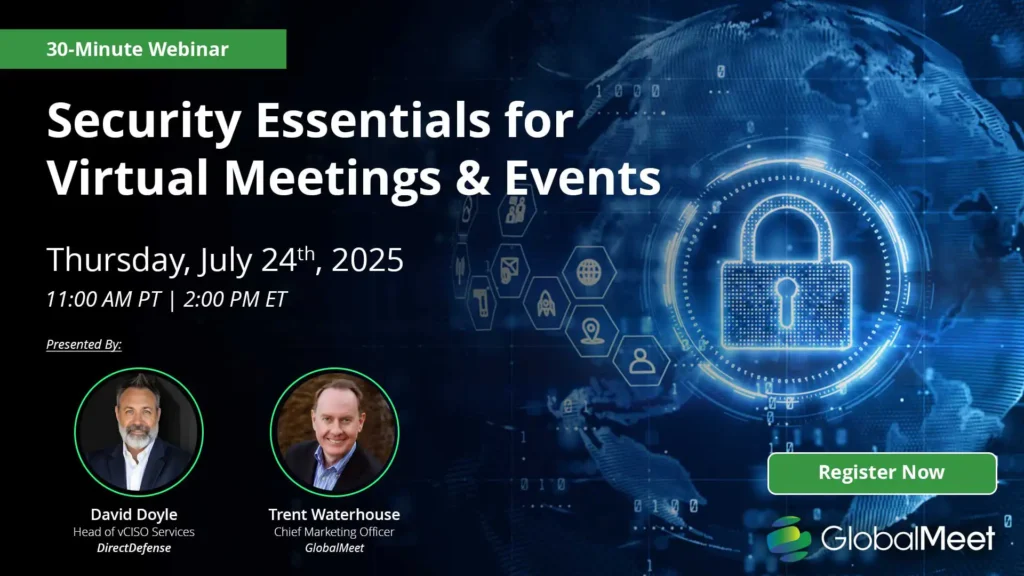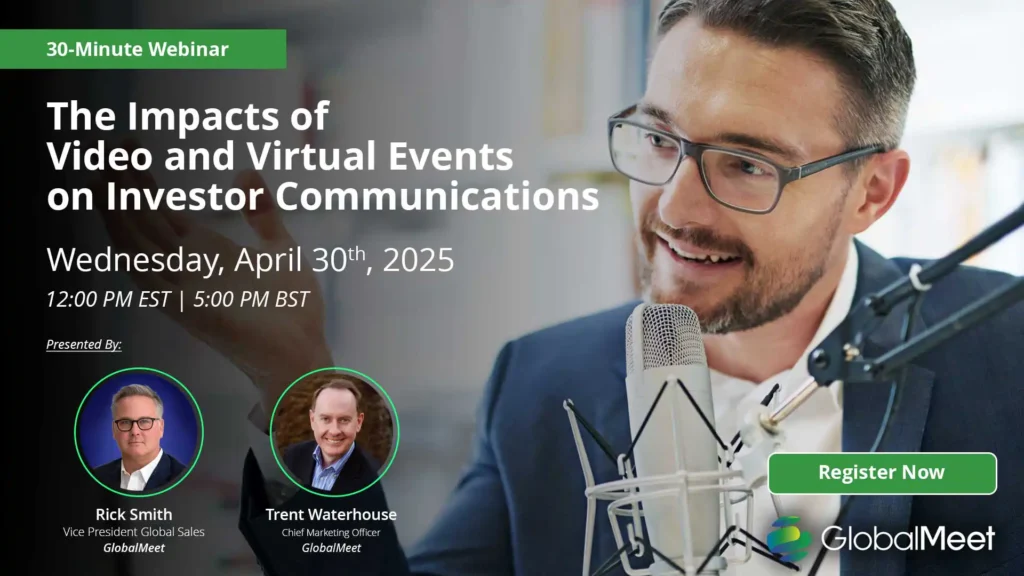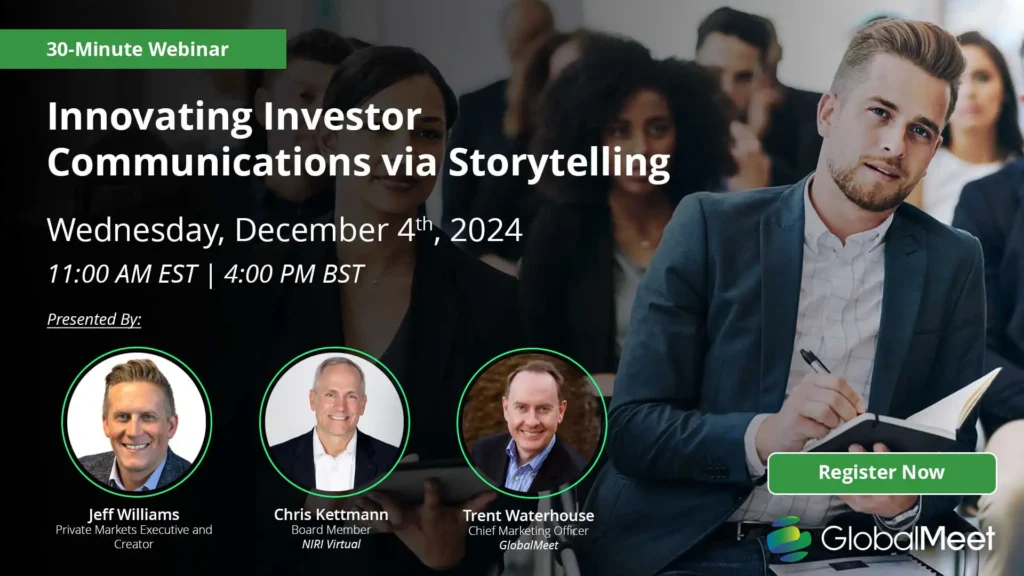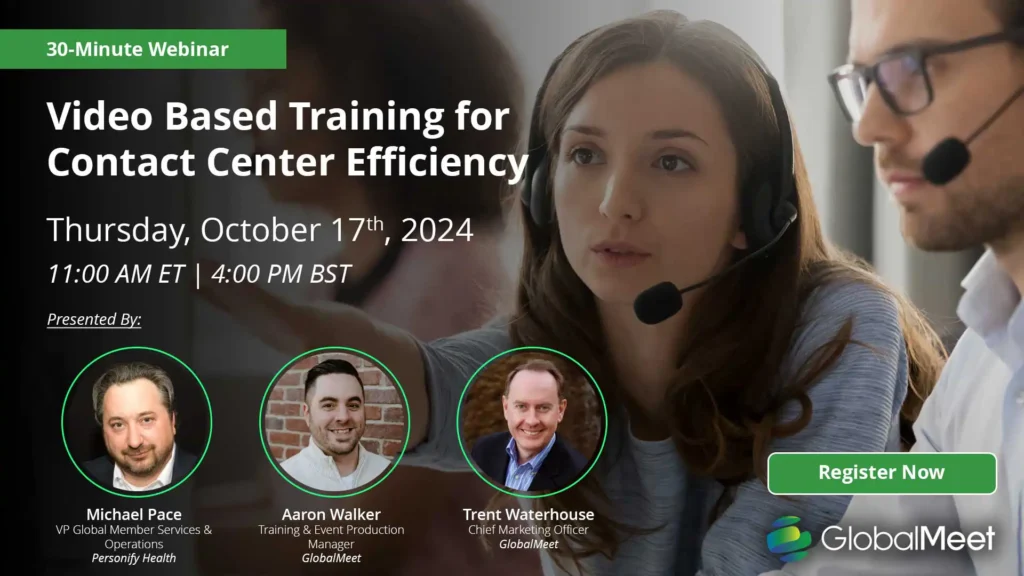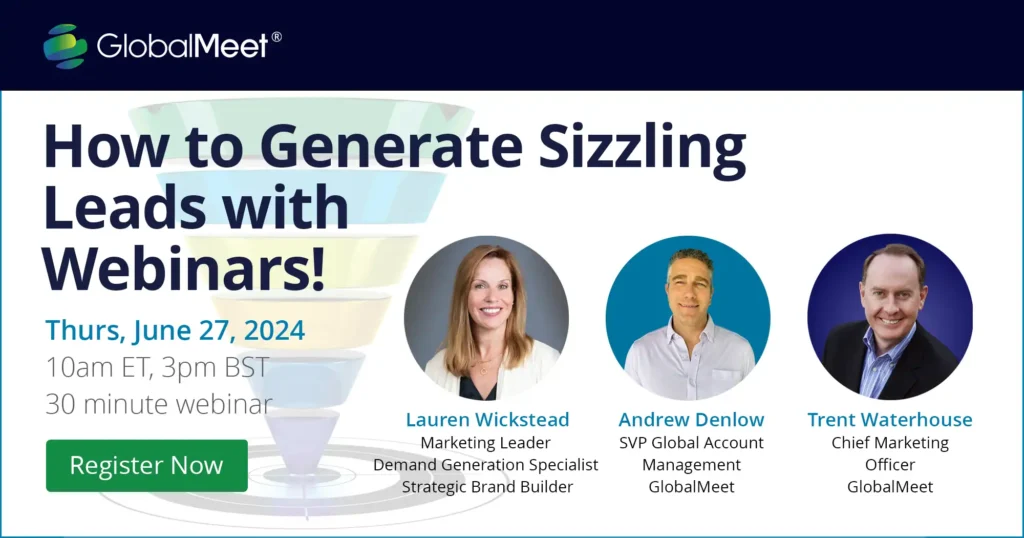
Webinar Platform Best Practices: Tips for Hosting Webinars
- by GlobalMeet Blog Team
- ,
Webinars have emerged as a powerful tool for engaging with audiences, generating leads, and sharing valuable insights. But we’ve all been to an underwhelming webinar—the kind of webinar that serves as a good excuse to put off your workload a little longer, but that’s about all you get from it. You don’t want your audience underwhelmed or overwhelmed—or any kind of whelmed, really.
So how do you maximize your webinar’s impact?
Below, we’ve broken down the best practices for hosting a webinar, and how to best leverage the opportunity. From choosing the right webinar platform to fostering a captivating presentation and following up with your audience, we’ll cover everything you need to know about hosting an effective virtual event.
What is a Webinar Platform?
A webinar platform is a specialized type of online service that enables businesses and individuals to host live, interactive events over the internet. These platforms are designed to simulate a real-life conference or seminar experience, providing tools for presentations, audience engagement, and communication. The main difference for attendees is that they don’t have to put on a suit or wear a lanyard badge.
Key Takeaways:
- Webinar platforms are specialized software or services for hosting web-based seminars.
- They offer tools for content creation, real-time interaction, and session recording.
- Features include registration management, scheduling, and detailed analytics.
- Webinars are versatile tools for education, promotion, and communication.
GlobalMeet’s webinar platform, for instance, exemplifies this technology, and serves as a robust and reliable solution for virtual event hosting. It caters to various industries and use cases, making it a versatile choice for organizations of any size. With features such as live streaming, audience interaction tools, and customizable event spaces, GlobalMeet’s platform offers a dynamic and engaging experience for both hosts and participants.
We’ll get into the key strengths of GlobalMeet webinar services a bit later—we don’t want this to feel like one of those recipe blogs where the only thing you need is all the way down at the bottom. So let’s dive into why you’re here—the meat and potatoes.
Best Practices for Hosting Webinars
Each stage of a webinar is crucial in its own right, requiring careful planning and execution to ensure a seamless and impactful experience. From understanding your audience and selecting the right topic to engaging with participants live and effectively following up post-event, these insights will guide you through every step of the process. Whether you’re a novice or a seasoned host, these guidelines will equip you with the knowledge and tools to make for a much more remarkable event.
Before the Webinar: “Don’t Worry, You’ve Got Plenty of Time”
- Understand your audience thoroughly through research and personas.
- Choose a relevant topic aligned with audience interests and current trends.
- Craft content with striking visuals, storytelling, and insights.
First and foremost, understanding your audience is paramount. Your audience is the driving force behind any webinar’s success. Invest time in comprehensive research to gain insights into their needs, preferences, and pain points. Developing audience personas can be instrumental in this process, allowing you to delve into their demographics, industry sectors, and specific challenges your webinar can address. By knowing your audience inside out, you can tailor your content and presentation style to resonate with them effectively, making your webinar more valuable.
Choosing the right topic for your webinar is equally pivotal. Your topic should not only align with your audience’s interests but also provide substantial value. You can’t just do a webinar on puppies because you feel like it, although—not a bad idea altogether…
Stay attuned to industry trends and emerging challenges, and consider conducting surveys or polls to gauge your audience’s preferences. Addressing current issues or offering practical solutions can significantly enhance the appeal of your webinar. The aim is to select a topic that not only educates but also captivates your audience’s interest, ensuring that they find the content compelling and worth their time.
Once you’ve identified your audience and chosen a relevant topic, it’s time to delve into content preparation. Engaging content forms the heart and soul of a successful webinar. Incorporate visual aids such as slides, videos, and images to enrich your presentation visually. Storytelling can be a potent tool to make your content relatable, resonating with your audience on a personal level.
To ensure that your content meets your audience’s expectations, focus on delivering actionable insights and valuable takeaways. Well-prepared content sets the stage for an interactive and impactful webinar, setting you up for success in your virtual communication endeavors.
During the Webinar: “Holy Moly, You Don’t Have Plenty Of Time”
- Use interactive elements like polls, quizzes, and Q&A sessions.
- Schedule the webinar strategically, considering global time zones.
- Keep the webinar within a 30 to 50-minute time frame for engagement.
- Create a custom landing page for a positive first impression.
Once your webinar is live, it’s crucial to implement best practices to ensure it runs smoothly and captivates your audience effectively. Interactive elements are your allies during the webinar. Features like polls, quizzes, and Q&A sessions can make your presentation more engaging and dynamic. Polls are a fantastic way to gauge your audience’s thoughts and engage them right from the start. Interactive quizzes add an element of fun and competition, keeping your audience invested in your content. The Q&A session allows real-time interactions, making participants feel included and part of the conversation. These interactive elements not only enhance engagement but also provide valuable insights into your audience’s preferences and understanding.
Scheduling your webinar strategically is another key consideration during the live event. Given that your audience might be spread across different time zones, aim for midday sessions that are reasonable for a global audience. Keeping the webinar within a 30 to 50-minute timeframe is advisable to maintain engagement levels. Lengthy sessions can lead to audience fatigue and diminish the overall impact of your content. It’s also vital to allocate time carefully, ensuring smooth transitions between topics and preventing abrupt endings that could leave attendees dissatisfied.
Creating a custom webinar landing page can significantly impact the audience’s perception during the live event. Your landing page serves as the first point of contact between you and your participants, setting the stage for what they can expect. Clearly display the date, time, and topic of your webinar to help attendees plan accordingly. A concise description of the content and its relevance can pique interest and draw potential participants. Think of your landing page as a sneak peek into the value you’re about to deliver, igniting curiosity and engagement. During the live webinar, this landing page serves as a virtual doorstep that welcomes attendees and sets a positive tone for the entire event.
After the Webinar: “Phew, That’s Over—But You’re Not Done!”
- Implement post-webinar strategies, such as follow-up emails with valuable content.
- Share the recorded session for accessibility and engagement.
- Collect attendee feedback through surveys.
- Foster a sense of community among participants through social platforms and forums.
Your webinar might have concluded, but the engagement doesn’t end there—you don’t go on a lovely date and never call them again, do you? No, you follow up like the Casanova you were born to be.
The post-webinar phase is just as crucial for maintaining connections and deriving additional value from your efforts. One of the most effective post-webinar strategies is sending follow-up emails. These emails should offer more valuable content related to the webinar topic, such as articles, templates, or additional resources. By doing this, you reinforce the knowledge participants gained during the webinar and demonstrate your commitment to providing ongoing value. These follow-ups also serve as an opportunity to express gratitude for attendees’ participation and feedback.
Additionally, it’s essential to share the recorded version of your webinar. Some participants might have missed the live event due to scheduling conflicts, and others may wish to revisit the content. Providing access to the recorded session ensures that your valuable insights remain accessible to a broader audience.
Furthermore, consider sending out surveys to your attendees to gather feedback. Ask them what they liked, areas for improvement, and topics they’d like to see in future webinars. This feedback is invaluable for refining your future webinar strategies and tailoring content to your audience’s preferences, ultimately enhancing engagement.
Beyond individual follow-ups and content sharing, consider fostering a sense of community among your webinar participants on social media and other platforms. Post “snackable” content about the event or related topics, enticing the participants—or even those who missed out—to dive back into the funnel.
Encourage them to connect on social media platforms or dedicated forums related to your webinars. This engagement enables participants to continue discussions, share ideas, and network with like-minded individuals. Building a community around your webinars not only keeps attendees engaged but also strengthens their loyalty to your brand or organization. It creates an ongoing conversation that extends beyond the webinar itself, providing participants with a platform to interact and learn from one another.
The Importance of Engaging Webinars
Hosting engaging webinars is essential in a world flooded with information and virtual events. Webinars bridge geographical gaps, bringing people together to connect, learn, and interact in an exciting and interactive manner. They offer numerous benefits, including increased audience engagement, brand loyalty, lead generation, and more targeted communication. By embracing these practices, you can harness the full potential of webinars and elevate your communication and education efforts.
- Audience Retention: Engaging webinars keep attendees’ attention, ensuring they stay for the entire presentation.
- Knowledge Transfer: Engagement enhances the conveyance and comprehension of information, promoting learning.
- Interactivity: Engaged audiences interact, ask questions, and contribute, creating a dynamic and informative experience.
- Positive Brand Impact: Well-executed webinars enhance brand reputation, potentially leading to increased conversions and audience loyalty.
Hosting Webinars with GlobalMeet: A Comprehensive Overview
Ease of Access and Reliability
GlobalMeet’s webinar platform is designed for effortless access, with no downloads or plugins needed, ensuring a smooth experience for all users. It’s mobile-friendly and has been calming the nerves of event organizers for over two decades with its reliable, browser-based access.
Scalability and Security
Whether you’re hosting a small seminar or a large-scale event, GlobalMeet can effortlessly accommodate up to 100,000+ live streaming attendees. The platform also prioritizes security, offering multiple protective measures such as password protection, email and domain authorization, and single sign-on options.
Engagement and Support
Engagement is key in webinars, and GlobalMeet offers a suite of interactive features like Q&A sessions, polls, surveys, and live chats. The platform also boasts robust analytics for post-event insights. Plus, with round-the-clock support and extensive training resources, even newcomers to virtual events can host with confidence.
By following these tips, choosing the optimal platform, and performing the appropriate amount of planning and research, you can be sure your next webinar event is more memorable than forgettable, and more remarkable than regrettable. Looking to get the ball rolling? Watch a demo or contact the GlobalMeet team today!
Checklist: Promoting Your Virtual Event
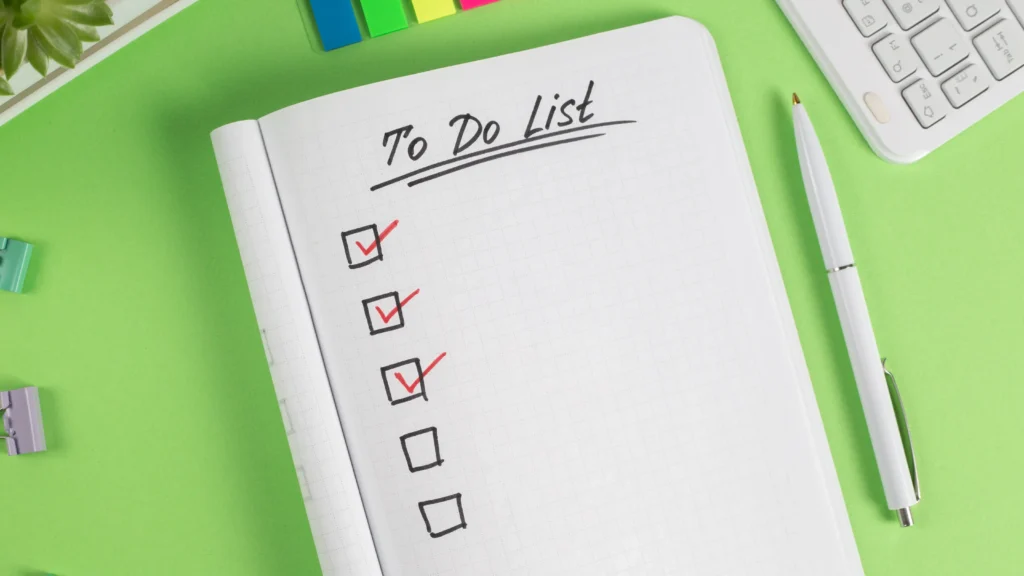
Promoting your event online can be more important than hosting the event itself. You can plan the best event experience in the world, but if you don’t take the time to promote it, no one will attend. To effectively market the event, you’ll need to create assets that allow you to market it successfully and drive attendees to your website to sign up.
Download our free event checklist to ensure you don’t miss a thing.
Please Fill out the form below to access this content.
Checklist: Preparing For Your Virtual Event
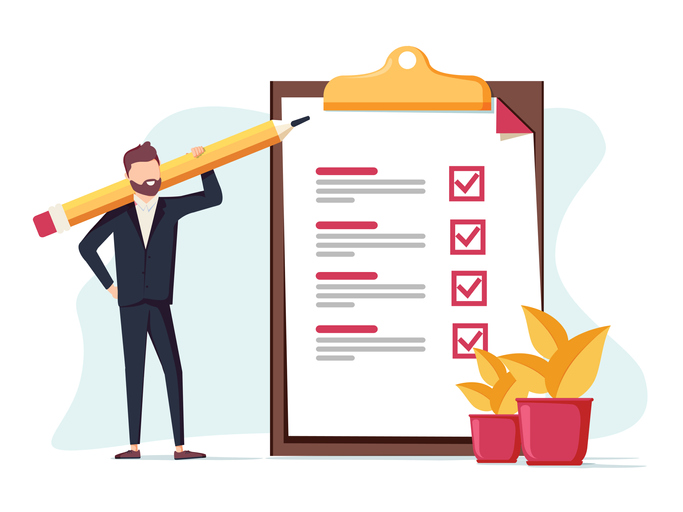
All events, from simple online events coordinated by a single person to highly-produced virtual events, require a planning process. The GlobalMeet Webcast team has been delivering high-impact virtual events for over twenty years and have put together our best practices to help you ensure your events are successful.
Download our free event checklist to ensure you don’t miss a thing.
Please fill out the form below to access this content.
Virtual Event Planning Guide and Checklists

This guide covers what you need to know about building an interactive and engaging virtual event experience for your attendees. With over 20 years experience powering virtual events, we offer our insights on each part of the process of hosting a successful virtual event, including pre-event preparation and planning, promoting the event to the right audience, hosting on the day of the event, and post-event follow-up.
Download our free Event Planning Guide and Checklists to help you put on your first or your next great event.
Please fill out the form below to access this content.

